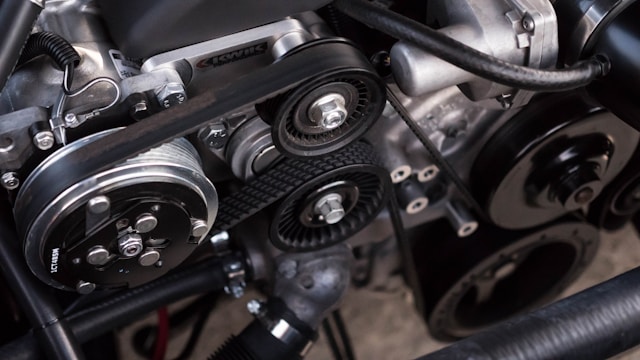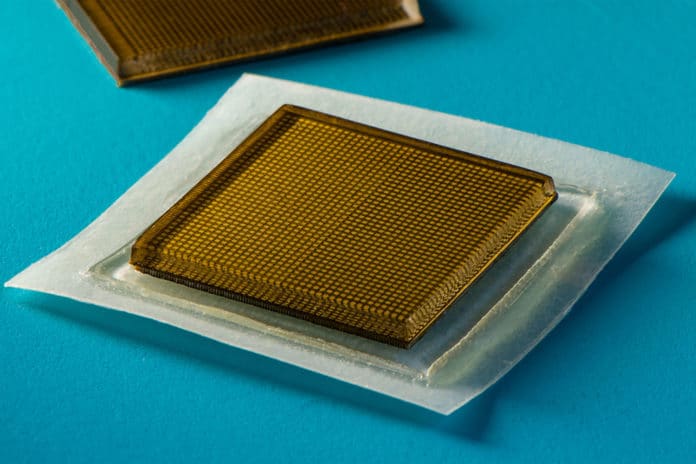Precision is everything in modern manufacturing.
Whether you’re building components for an aircraft, crafting parts for an engine, or designing medical devices, the need for accuracy can’t be overstated.
That’s where induction heat treating steps in. This process offers a unique combination of precision, speed, and efficiency that makes it ideal for industries where quality and consistency are non-negotiable.
What Is Induction Heat Treating?
Before diving into the benefits, let’s break down what induction heat treating actually is. Imagine needing to heat a specific part of a metal component without affecting the rest of it. Traditional heat treating methods might struggle with this, often leading to unnecessary heating of the entire piece. It also helps you be more cost efficient.
Induction heat treating, on the other hand, uses electromagnetic induction to generate heat directly within the material. This isn’t just a superficial process; the heat is generated internally, allowing for extremely precise control over where and how much heat is applied.
Think of it like using a microwave oven compared to a conventional one. A microwave heats the food from the inside out, targeting specific molecules. Induction heat treating works in a similar way, but with metals. It targets specific areas of a part, heating them quickly and efficiently without disturbing the surrounding material. This precision is why it’s becoming a go-to solution in industries that demand high-quality results.
Precision and Control: The Core Advantages
Precision is where induction heat treating truly shines. In industries like aerospace and medical device manufacturing, there’s no room for error. Every component must meet strict specifications, and any deviation can have serious consequences. Induction heat treating offers the kind of precision that’s needed to achieve these exacting standards.
Take, for example, the aerospace industry. Here, components like turbine blades and landing gear need to withstand extreme conditions while maintaining their structural integrity. Traditional induction heat treatment can sometimes lead to warping or uneven hardness, which is unacceptable in this context.
Induction heat treating, with its ability to apply heat precisely and consistently, ensures that each part is treated exactly as required.
This control isn’t just about applying heat to the right spot. It’s also about maintaining consistent temperatures throughout the process. With induction heat treating, temperatures can be monitored and adjusted in real-time, ensuring that the material is heated uniformly. This level of control is essential for producing parts that meet the strict quality standards of industries like aerospace and medical manufacturing.
Repeatability is another key advantage of induction heat treating. When you’re producing thousands or even millions of parts, consistency is crucial. Induction heat treating ensures that each part is treated in the same way, resulting in uniform hardness and strength across large production runs. This repeatability is why industries that require high volumes of precise parts, like automotive manufacturing, are increasingly turning to induction heat treating.
Energy Efficiency and Speed: Economic Benefits
Precision and control are essential, but they’re not the only reasons why companies are embracing induction heat treating. This process also offers significant economic benefits, particularly in terms of energy efficiency and speed.
One of the main advantages of induction heat treating is its reduced energy consumption. Traditional heat treating methods, like furnace-based processes, often require heating entire components or even entire batches of components to achieve the desired results.
This can be incredibly energy-intensive, leading to high operational costs. Induction heat treating, by contrast, targets specific areas of a part, meaning that less energy is needed to achieve the same results. This energy efficiency translates into lower costs, making induction heat treating an attractive option for manufacturers looking to reduce their energy bills.
Speed is another area where induction heat treating excels. Because the process generates heat directly within the material, it can heat parts much more quickly than traditional methods. This faster processing time not only reduces energy consumption but also increases production throughput. For manufacturers, this means they can produce more parts in less time, leading to shorter lead times and faster time-to-market.

These economic benefits aren’t just theoretical. Many companies have already seen significant cost savings by switching to induction heat treating.
For example, an automotive manufacturer might find that they can produce high-strength gears in half the time it would take using traditional heat treating methods. These time savings, combined with reduced energy costs, make induction heat treating a smart investment for any company looking to improve their bottom line.
Applications in Precision Manufacturing
Induction heat treating isn’t just a niche process; it’s used across a wide range of industries, each with its own unique demands. Let’s take a closer look at some of the key applications of induction heat treating in precision manufacturing.
In the aerospace industry, induction heat treating is used to produce critical components like turbine blades, landing gear, and structural elements. These parts must withstand extreme conditions, from high temperatures to intense mechanical stress.
Induction heat treating ensures that they have the necessary hardness and strength while maintaining tight tolerances. This level of precision is essential for ensuring the safety and reliability of aircraft.
The automotive industry is another major user of induction heat treating. Here, the process is used to treat parts like gears, axles, and engine components. These parts need to be both hard and tough, capable of withstanding the wear and tear of everyday use. Induction heat treating allows manufacturers to achieve these properties with a high degree of consistency, ensuring that each part meets the required specifications.
Medical device manufacturing is another area where induction heat treating plays a crucial role. Surgical instruments, implants, and other medical devices require extremely precise heat treating to ensure that they are both strong and biocompatible. Induction heat treating allows manufacturers to apply heat exactly where it’s needed, ensuring that the final product is safe and effective for use in medical procedures.
These applications highlight the versatility of induction heat treating. Whether it’s ensuring the safety of an aircraft, the durability of a car, or the reliability of a medical device, this process provides the precision and control needed to meet the demanding requirements of modern manufacturing.
Real-World Success Stories
The advantages of induction heat treating aren’t just theoretical; they’re backed up by real-world success stories from a variety of industries. Let’s take a look at a few examples.
In the aerospace industry, a leading manufacturer of turbine blades needed a way to improve the consistency of their heat treating process. They switched to induction heat treating and saw immediate improvements. The process allowed them to achieve tighter tolerances and more uniform hardness across their blades, leading to better performance and longer lifespans.
An automotive company faced a similar challenge with their gears. Traditional heat treating methods were leading to inconsistent results, with some gears failing to meet the required hardness. By switching to induction heat treating, they were able to produce gears with consistent hardness and strength, reducing the number of rejected parts and improving overall quality.
In the medical device industry, a manufacturer of surgical instruments needed a way to ensure that their products were both strong and biocompatible. Induction heat treating provided the solution. By applying heat precisely where it was needed, the manufacturer was able to produce instruments that met the required standards without compromising on safety or performance.
These success stories demonstrate the real-world benefits of induction heat treating. Whether it’s improving product quality, reducing costs, or increasing production efficiency, this process offers a range of advantages that make it an attractive option for manufacturers in a variety of industries.
Conclusion
Induction heat treating is more than just a heat treating method; it’s a game-changer for precision manufacturing. With its combination of precision, control, energy efficiency, and speed, it’s no wonder that more and more companies are making the switch.
As industries continue to demand higher quality and tighter tolerances, the need for precise and efficient heat treating processes will only grow. Induction heat treating is well-positioned to meet these demands, providing manufacturers with the tools they need to stay competitive in a fast-paced market.
Whether you’re in aerospace, automotive, medical devices, or any other industry that requires high-precision components, induction heat treating offers a range of benefits that can help you achieve your goals. From improved product quality to reduced operational costs, this process is a smart investment for any company looking to stay ahead of the curve in precision manufacturing.






